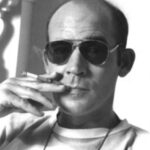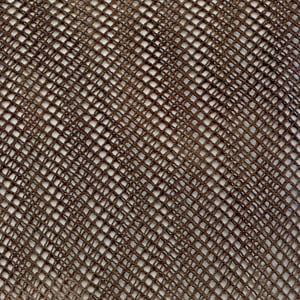“Magical Realism” is a broadly descriptive term for a movement in fiction originally brought to prominence by the surreal works of Czech author Franz Kafka (1883-1924). In novels of this genre, the frame or surface may be conventionally realistic, but contrasting elements — the supernatural, myths, dreams and fantasy — invade the realism and change the entire basis of the literary art. For example, a character may live far beyond a normal lifespan through many generations. Such magical elements are presented straightforwardly as real occurrences.
Since Kafka, this style came to be associated with South American writers, particularly Jorge Luis Borges (1899-1986) of Argentina and Gabriel García-Márquez of Colombia (b. 1927). Some attribute this to a greater openness in Latin American culture toward mythology for explanations of the everyday world, versus Anglo-American culture, which explains reality using natural or physical laws. However, over the past six decades, magical realism migrated north of the Rio Grande, where academic critics have judged John Barth, Thomas Pynchon and Toni Morrison the foremost North American members of this literary school. Beyond the Ivory Tower, the two most prestigious authors in this group among the general reading public are Bernard Malamud and W.P. Kinsella. Their mainstream popularity was due both to the subject matter of their most successful novels — baseball — and those books being made into successful Hollywood films starring big-name actors.
Maryland native John Barth (b. 1930), was a serious music student at Juilliard before becoming an English professor. After discovering Borges, his own writing changed from traditional realism, which he considered “used-up,” to postmodern parody with The Sot-Weed Factor (1960). He combined the two genres and added magic with Giles Goat-Boy (1966) about a boy raised as a goat who discovers his humanity and becomes a savior. His trilogy Chimera (1972) epitomized Barth’s self-image as a shaman-figure whose novels aim to disprove the belief that any objective reality exists independent of subjective observation.
Thomas Pynchon (b. 1937), originally from Long Island, studied engineering physics at Cornell before earning an English degree. Known for the dense complexity of his books, Pynchon worked for Boeing as a technical writer before publishing his third and most celebrated novel, Gravity’s Rainbow (1973). Described by Timothy Leary as the “Old Testament” of cyberpunk, this hallucinatory novel, with its vast array of subjects, wildly eccentric characters, frenzied action, frequent digressions and imposing length, is frequently compared to James Joyce’s Ulysses. Like J.D. Salinger, Pynchon is a noted recluse; he entered into popular culture when he voiced over three cameo animated appearances – depicted with a bag over his head – on the television series The Simpsons.
Toni Morrison (b. 1931), who grew up in Lorain, Ohio, stands in the vanguard of contemporary American fiction writers, transcending categories of gender and ethnicity. The otherworldliness of her critically acclaimed novels The Bluest Eye (1970), Sula (1974), Song of Solomon (1977), Tar Baby (1981) and Beloved (1987) encompasses mysticism, black folklore and mythology, leading some to credit her with creating a subgenre of magical realism dubbed “Black Magic.
In his 1952 novel The Natural, Bernard Malamud (1914-86), born in New York City to Russian Jewish emigres, raised baseball to its rightful place in American mythology. The book’s setting, which evokes Brooklyn’s mythic ballpark, is a magical universe where White Witch and Black Witch struggle for the soul of a savior, Roy Hobbs, who comes – seemingly out of nowhere – to restore the Waste Land to fertility by winning the pennant for the home team. In 1984, the book was adapted into a film starring Robert Redford.
Since The Natural was first published, Canadian author W.P. (William Patrick) Kinsella (b. 1935) has become baseball’s reigning magical realist — and prolifically so. Kinsella has written more than 20 books and 200 short stories about the National Pastime including The Iowa Baseball Confederacy (1986) and Magic Time (1998). His best-known novel, Shoeless Joe (1982) was adapted into the 1989 film Field of Dreams starring Kevin Costner, solidifying baseball’s mythos in American popular culture. It spawned the now-commonplace catchphrase “If you build it, they will come” and has been spoofed in a television commercial for Pepsi MAX© featuring baseball superstars past and present.
__________
Sources
Barth, John, “The Literature of Exhaustion.” The Atlantic Monthly 220 (Aug. 1967): pp. 29-34.
Faris, Wendy B. and Lois Parkinson Zamora. Introduction to Magical Realism: Theory, History, Community. Duke University Press, 1995. pp. 3-4.
Fiedler, Leslie. Love and Death in the American Novel. Dalkey Archive Press, 1997. p. 493.
Harmon, William and C. Hugh Holman. “Magic Realism.” A Handbook to Literature. 8th ed. Prentice Hall, 1999. p. 304.
Samuels, Wilfred D. and Clenora Hudson-Weems. Toni Morrison. Twayne, 1990, pp. ix-xi.
Simpkins, Scott. “Magical Strategies: The Supplement of Realism.” Twentieth Century Literature 34.2 (1988): pp. 140-54.
Strecher, Matthew C., “Magical Realism and the Search for Identity in the Fiction of Murakami Haruki.” Journal of Japanese Studies, Volume 25, Number 2 (Summer 1999): pp. 263-98.



